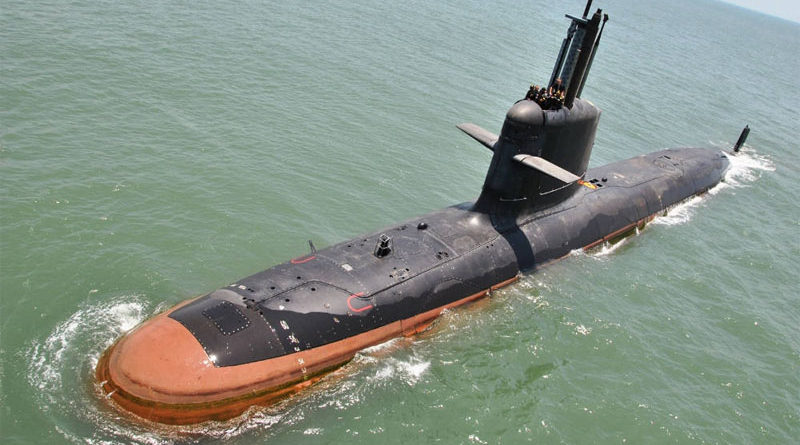Narendra Modi Commissions INS Kalvari: First Indigenous Scorpene-Class Submarine
The first of the indigenous Scorpene-class submarines, INS Kalvari, was commissioned in the Indian Navy on Thursday in the presence of Prime Minister Narendra Modi and other dignitaries. Commissioning of the submarine, named after the first Foxtort-class submarine INS Kalvari, comes just days after the navy observed the golden jubilee of its submarine wing.
INS Kalvari is the first of the six Scorpene-class submarines built by shipbuilder Mazagon Dock Limited. The submarines, designed by French naval defence and energy company DCNS, are being built in Mumbai as part of Project-75 of the Indian Navy.
It’s after a gap of 17 years that a submarine that was built indigenously in India was being commissioned in the Indian Navy. It would be the 16th submarine as part of India’s fleet, a figure that has long been in dire need of upgradation. To put this in perspective, China has 68 submarines, while the US has 70. North Korea is the world leader with 78 submarines.
INS Kalvari being escorted by tugboats at Mazagon Docks in October 2015. Reuters
Why is INS Kalvari so Important for India
The navy is betting on INS Kalvari to sharpen its underwater attack capabilities. It was part of Project-75 of the navy, which involves a collaboration with French defence firm DCNS at a cost of Rs 3.5 billion. Its construction started in May 2009 and two submarines were supposed to be commissioned this year, but the project has fallen behind schedule.
The first four submarines will be conventional, while the last two are to be equipped with the Air Independent Propulsion (AIP) system, which will enable the vessel to stay underwater for longer duration.
All six diesel-electric attack submarines will be equipped with an anti-ship missile, which has a proven record in combat, besides other weapon systems. In May this year, the navy successfully test-fired an anti-ship missile from INS Kalvari.
A second Scorpene submarine, INS Khanderi, is also undergoing trials and is likely to be inducted shortly.
Salient Features
The Scorpene submarine is designed to operate in all theatres of war, including the tropics. It is capable of handling various missions such as anti-surface warfare (attacking surface ships), anti-submarine warfare (destroying submarines), intelligence gathering, mine-laying and area surveillance. The Kalvari was built with a special kind of high-tensile steel that is capable of withstanding high yield stress. This feature allows it to withstand pressure exerted by water and hydrostatic force, while diving deeper to enhance stealth. It is also capable of carrying weapons that can be easily reloaded at sea, a report on Hindustan Times said.
Measuring 67.5 metres in length and 12.3 metres in height, it can carry 18 torpedoes and travel upto 1,020 kilometres underwater. It can also dive to depths of upto 300 metres. And given the silent diesel electric motor it is equipped with, it can also be stealthy and avoid detection.
A report on NDTV said the heart of the Kalvari’s weapons system is a ‘SUBTICS’ (Submarine Tactical Integrated Combat System) suite which processes information from the sonars onboard the submarine in detecting targets which can then be engaged with torpedoes or missiles. It has an attack and search periscope equipped with Infrared/Low Light Level cameras and Laser Range finders to spot targets on the surface of the sea.
‘Reincarnation’ of the Original INS Kalvari
In keeping with the India’s mythologies and naval tradition, the Kalvari is a “reincarnation” of the first Indian submarine to be commissioned into the Indian Navy, on 8 December, 1967, the Hindustan Times report added.
The previous Kalvari served for nearly three decades, before being decommissioned in May 1996. “In true nautical tradition, she will now be reincarnated, by Mazagon Dock, once again a powerful predator of the deep, guarding the vast maritime interests of our nation,” the navy was quoted as saying in the report.
With inputs from PTI & First Post

